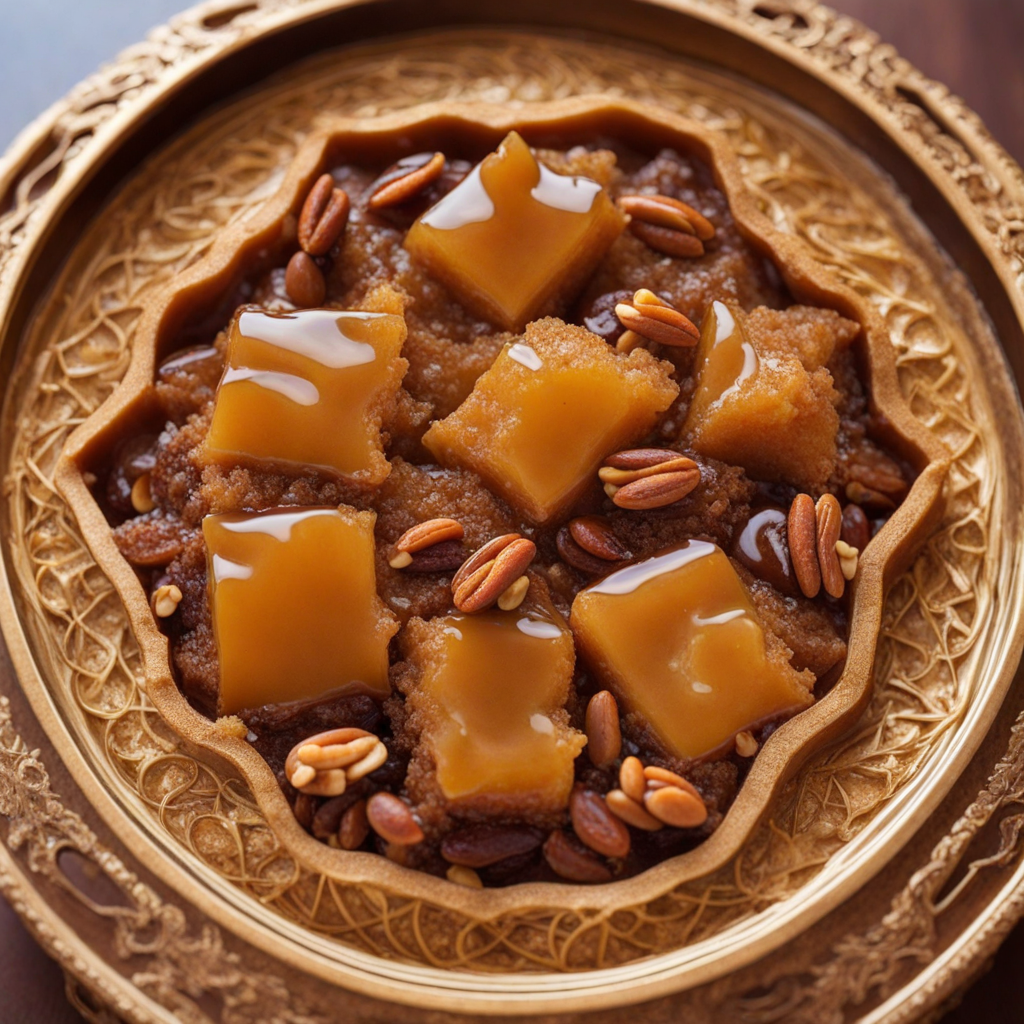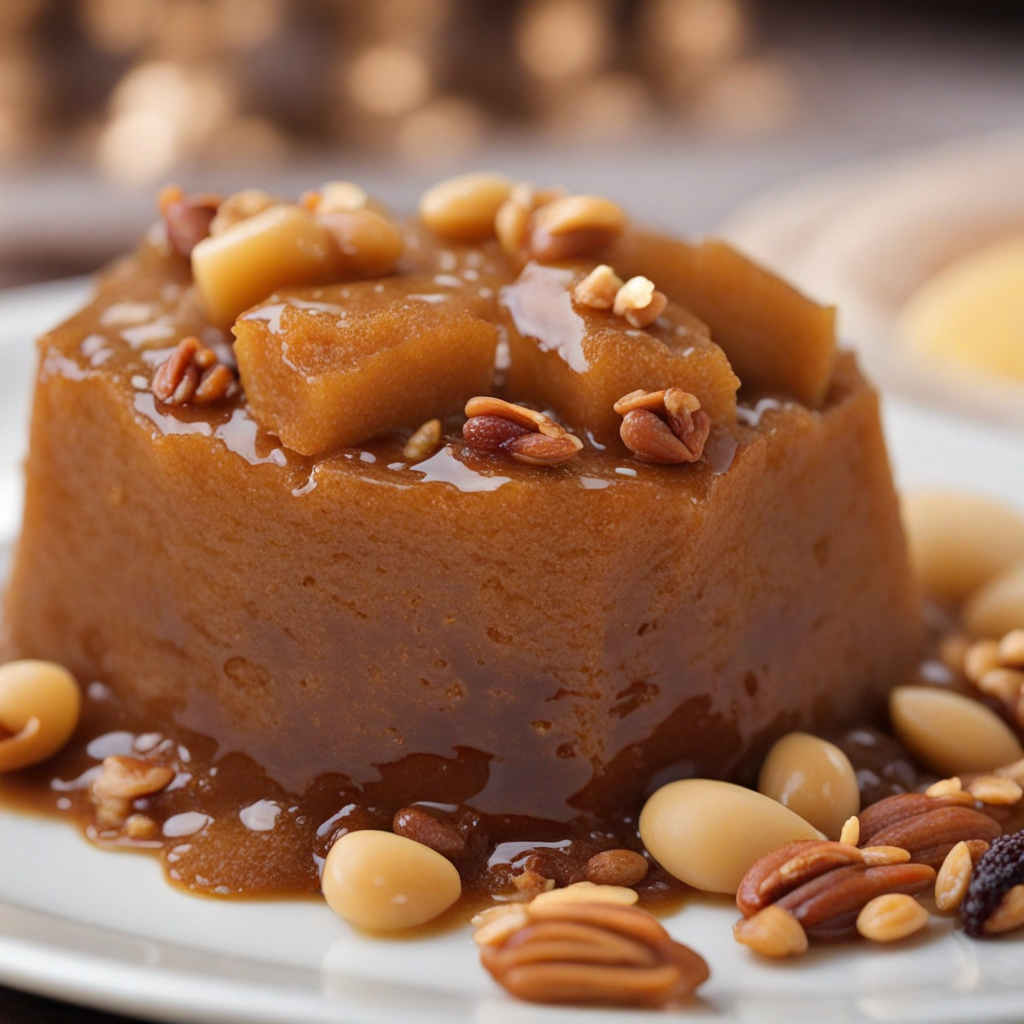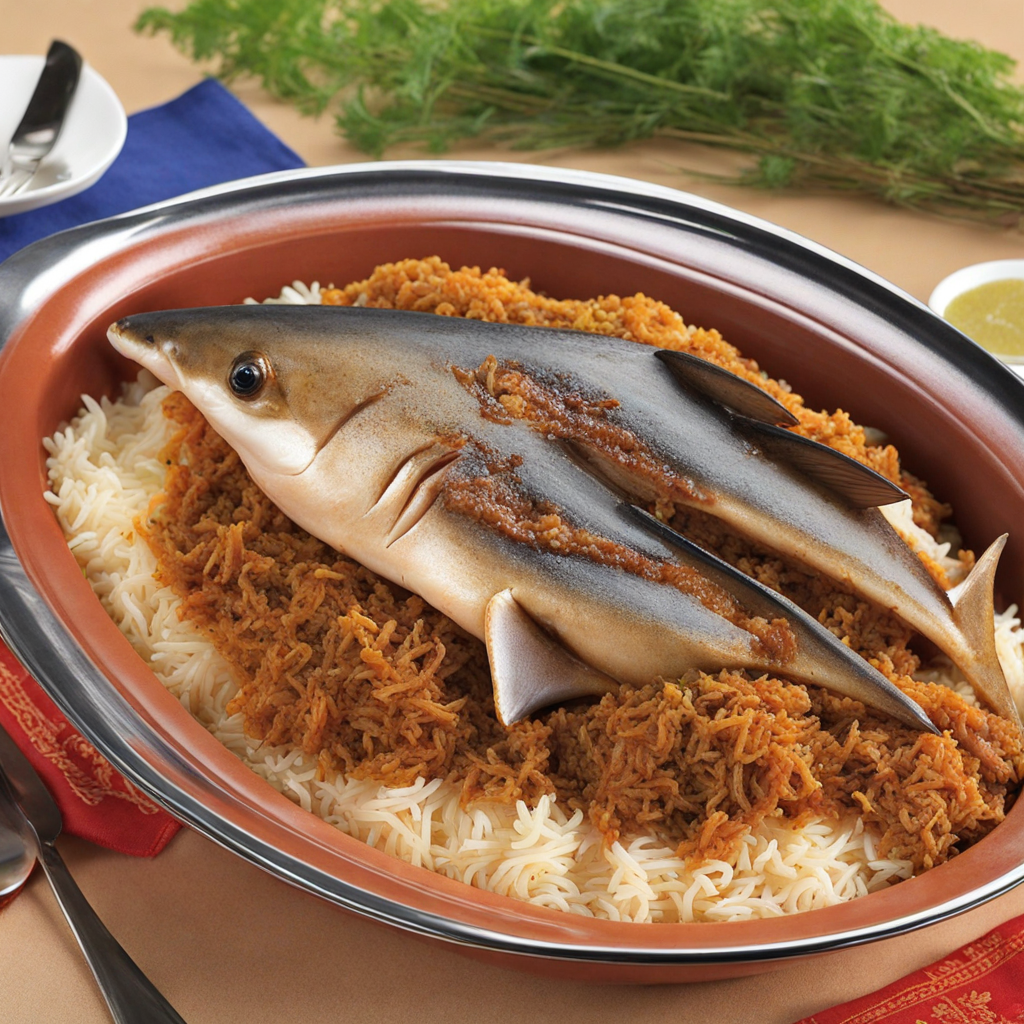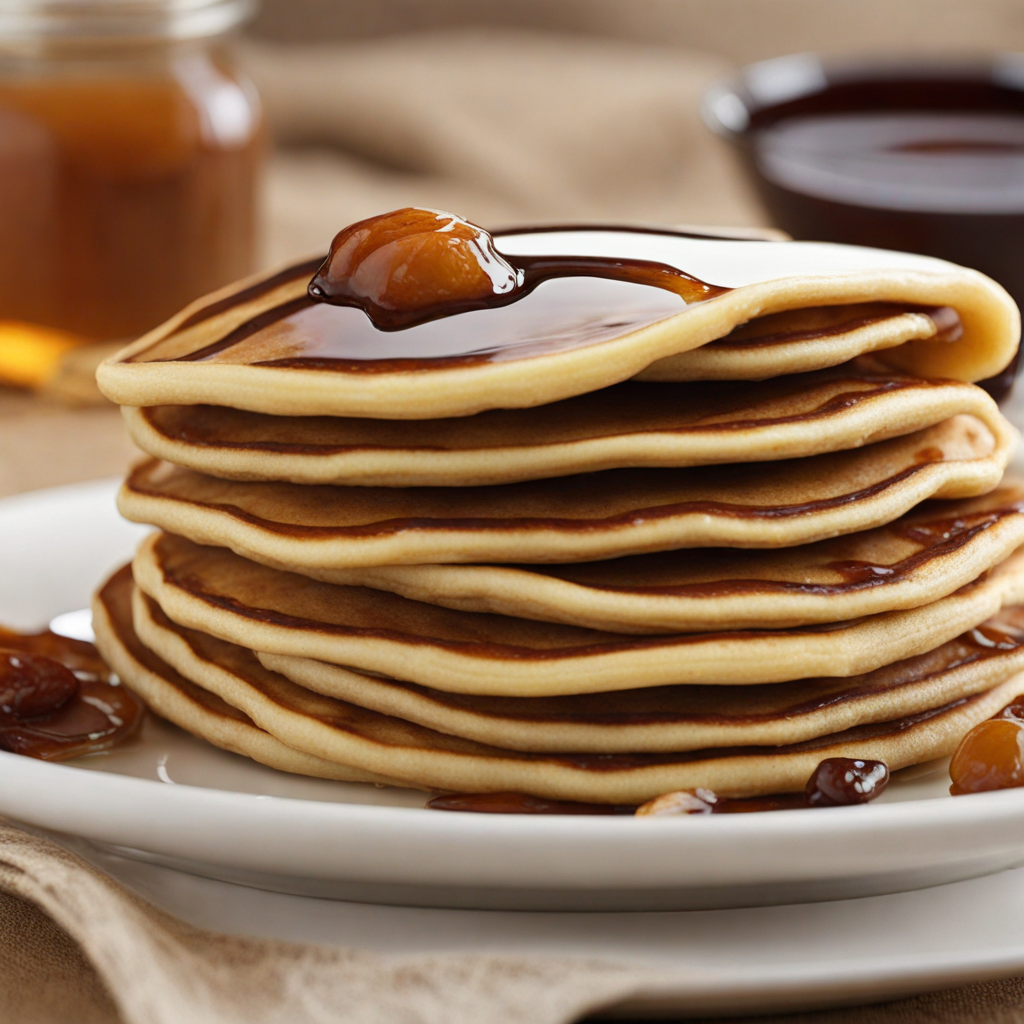Omani Halwa
حلوى عمانية, or Omani Halwa, is a traditional sweet delicacy that holds a significant place in Omani culture and cuisine. This dessert is not just a treat; it embodies the essence of Oman's rich heritage and traditions, often served during special occasions, festivities, and as a gesture of hospitality to guests. The history of Omani Halwa can be traced back to the Sultanate's historical trade routes, which facilitated the exchange of spices and culinary techniques from various regions, particularly from the Indian subcontinent and the Middle East. The flavor profile of Omani Halwa is a delightful combination of sweetness and spice. It is characterized by its aromatic qualities, resulting from the careful blending of ingredients like saffron, cardamom, and rosewater, which impart a unique fragrance and nuanced taste. The halwa is typically sweetened with sugar and often has a rich, buttery flavor due to the ghee used in its preparation. Each bite offers a complex interplay of textures and flavors, with a moist, slightly chewy consistency that melts in the mouth, complemented by the crunch of nuts often added to the mixture. Preparation of Omani Halwa is a meticulous process that requires both skill and patience. The base of the halwa is made from a combination of semolina and sugar, which is cooked slowly in ghee until it reaches a golden color. The key to achieving the perfect texture lies in the constant stirring, which helps prevent the mixture from burning and ensures even cooking.
How It Became This Dish
The Sweet Legacy of حلوى عمانية: A Culinary Journey Through Oman #### Origins in Oman حلوى عمانية, or Omani Halwa, is a traditional sweet delicacy that embodies the rich cultural tapestry of Oman. Its origins can be traced back to the Arab world, where the art of confectionery flourished. Omani Halwa stands out due to its unique blend of spices, textures, and flavors, which reflects the country's history of trade and cultural exchange. The roots of Omani Halwa are believed to date back to the 17th century, a period marked by Oman’s burgeoning maritime trade. Oman's strategic location along the trade routes connecting Africa, the Middle East, and Asia made it a melting pot of diverse ingredients and culinary techniques. The introduction of sugar and various spices from India, Africa, and the Levant played a crucial role in shaping the distinct characteristics of Omani Halwa. #### Ingredients and Preparation The preparation of حلوى عمانية is an intricate process that requires patience, skill, and an understanding of flavors. The primary ingredients include sugar, ghee (clarified butter), rosewater, saffron, and a variety of nuts such as almonds and pistachios. The use of spices like cardamom, cinnamon, and nutmeg not only enhances the flavor but also reflects the traditional Omani affinity for spices, which were historically used for both culinary and medicinal purposes. The cooking process involves boiling sugar with water until it reaches a syrupy consistency, followed by the gradual incorporation of ghee and spices. The mixture is then stirred continuously until it thickens and takes on a gooey texture. Finally, nuts are folded in, and the mixture is poured into a mold to cool and set. This labor-intensive preparation is often accompanied by social gatherings, where family members come together to share in the experience. #### Cultural Significance Omani Halwa is more than just a sweet treat; it is a symbol of hospitality and celebration in Oman. Traditionally, it is served to guests during special occasions, such as weddings, religious festivals, and other cultural events. The act of serving Halwa is deeply rooted in Omani customs, reflecting the importance of generosity and togetherness in the culture. In Oman, Halwa is often paired with Arabic coffee (qahwa), and this combination is a staple of Omani hospitality. The slight bitterness of the coffee complements the sweetness of the Halwa, creating a harmonious flavor profile. This pairing is a ritual in itself, signifying respect for guests and a celebration of Omani heritage. The significance of Omani Halwa extends beyond mere sustenance; it plays a role in the preservation of cultural identity. Each family may have its own recipe passed down through generations, contributing to the rich tapestry of Omani culinary traditions. The preparation of Halwa is often a communal activity, fostering bonds within families and communities. #### Development Over Time As Oman has evolved, so too has the preparation and presentation of حلوى عمانية. In the early days, the Halwa was primarily made for special occasions and festive gatherings, but its popularity has grown significantly over the years. The 20th century saw the rise of commercial production, with many sweet shops and bakeries specializing in Halwa, making it more accessible to the general public. Modern variations of Omani Halwa have emerged, incorporating new flavors and ingredients while maintaining the essence of the traditional recipe. Innovations such as chocolate Halwa and fruit-infused versions cater to changing tastes, especially among younger generations. However, the classic version, characterized by its rich, aromatic profile, remains a beloved favorite. In recent years, Omani Halwa has gained international recognition, often featured at cultural festivals and food exhibitions abroad. This global interest has prompted chefs and food enthusiasts to explore Omani cuisine, further enhancing the global appreciation for this unique sweet. #### Halwa in Contemporary Oman In contemporary Oman, حلوى عمانية continues to hold a significant place in society. It is not only a cherished cultural artifact but also a source of pride for Omanis. The government and various cultural organizations actively promote Omani culinary heritage, including Halwa, as a means of fostering national identity and tourism. Omani Halwa is frequently showcased at exhibitions, where visitors can observe the preparation process and sample the final product. Such events serve to educate both locals and tourists about the importance of this delicacy in Omani culture, reinforcing its status as an emblem of hospitality and tradition. Furthermore, the rise of social media has allowed for a resurgence in interest surrounding traditional foods, including Halwa. Home cooks and professional chefs alike share their unique interpretations, showcasing the versatility of the dish while honoring its roots. This digital platform serves as a bridge between generations, encouraging the younger populace to engage with their culinary heritage. #### Conclusion In conclusion, حلوى عمانية is more than just a sweet indulgence; it is a rich narrative woven into the cultural fabric of Oman. From its historical origins to its contemporary significance, Omani Halwa encapsulates the essence of Omani hospitality, community, and identity. As Oman continues to evolve, this beloved delicacy remains a testament to the enduring legacy of its culinary traditions, celebrated by both locals and the global community. In every bite of Omani Halwa, one can taste the history, tradition, and love that has gone into its creation, making it an everlasting symbol of Omani culture.
You may like
Discover local flavors from Oman







